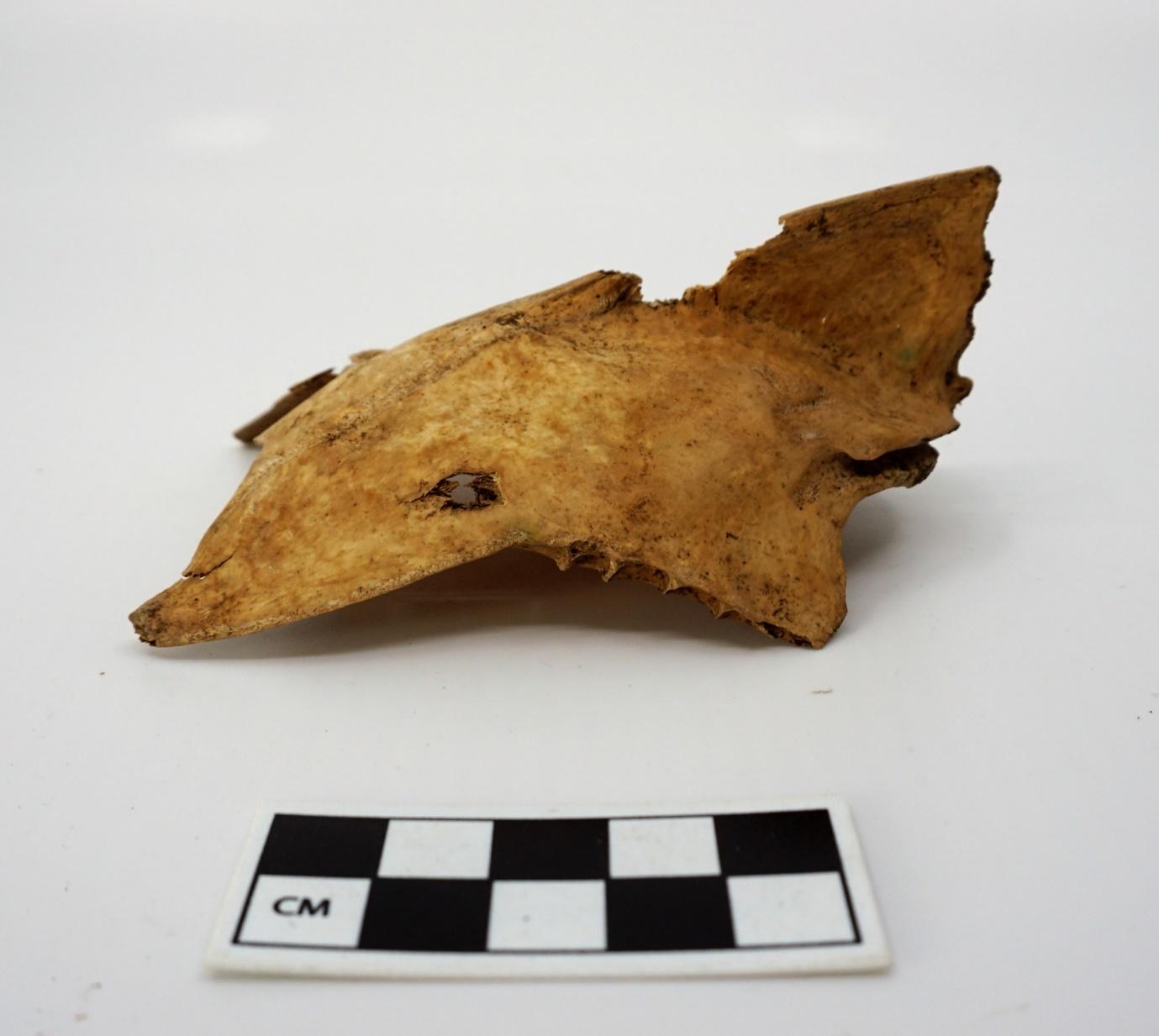
1 minute read
Horse (Equus caballus
Horse (Equus caballus)
Figure 11: Location in the body of the two horse bones recovered at Litlibær.
Two horse bones were recovered at Litlibær, both from the lower leg (Figure 11). Based on
the greatest length of the third metacarpal the withers height of the horse can be calculated
to around 1,28 m based on the multiplication factors from small ponies (Table 12). This fits
well with the average calculated height of horses from Viking Age burials which usually
ranges between 1,25-1,44 m with an average height of 1,30-1,39 m (Leifsson, 2018, pp. 233–
234). The metacarpal from Litlibær gives a withers height which is slightly smaller than the
Icelandic horse today but this is not unexpected as systematic breeding has increased the average height of the Icelandic horse in the past few decades (“Íslenski hesturinn stækkar,”
2014).
Table 12: Calculations for withers height for horse 3rd metacarpal 2012-22-1561 #34 using factors from Eisenmann (2009).
Horse breed Multiplication factor Calculated withers height Draft horses 6,48 1,33 Arab horses 5,81 1,19 Przewalski's horses 5,77 1,18 Small Pony’s 6,24 1,28 Average 1,25
Neither horse bone had any visible butchery marks, and both were reasonably well
preserved. It is unclear if the horse bone reflects horse meat consumption at the site.
Another possibility is that the bones are raw material for bone working but net weights made from the long bones of horse and cattle were used for fishing in Iceland at least from the 19th
century and probably much longer (Gestsson, 1955; Pálsdóttir, 2018).
Table 13: Horse bones from Litlibær. Measurements in mm following von den Dreisch (1976).
ÞJMS number Context Context type Bone End Frag Texture Fusion Side Ref# Bd SD GL Bp Dp DD 2012-22-1559 13846 Disturbed layer 3rd phalanx Whole 10 3 Fused 2012-22-1561 13744 Cess tank fill 3rd metacarpal Whole 11 2 Fused Left 34 44,29 32,38 205,12 46,23 29,47 19,16







